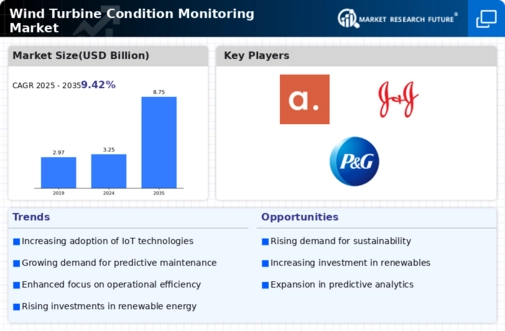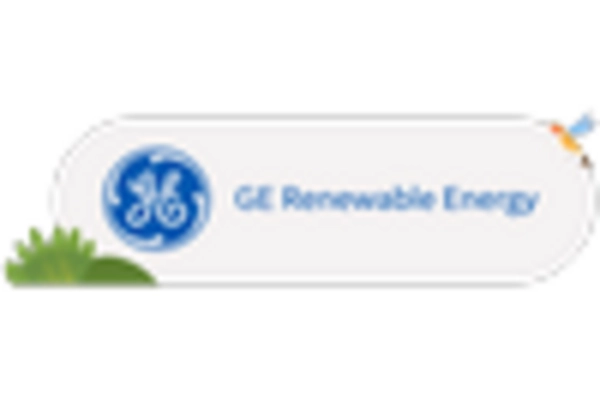Market Growth Projections
The Global Wind Turbine Condition Monitoring Market Industry is poised for significant growth, with projections indicating a compound annual growth rate (CAGR) of 9.42% from 2025 to 2035. This growth trajectory reflects the increasing adoption of condition monitoring technologies as operators seek to enhance turbine reliability and performance. The market is expected to expand from 3.25 USD Billion in 2024 to 8.75 USD Billion by 2035, driven by factors such as technological advancements, regulatory support, and a growing focus on operational efficiency. These projections underscore the vital role of condition monitoring in the sustainable development of wind energy.
Regulatory Support and Incentives
The Global Wind Turbine Condition Monitoring Market Industry benefits from robust regulatory frameworks and incentives established by governments to promote wind energy. Policies such as feed-in tariffs and renewable energy certificates encourage investments in wind projects, thereby increasing the number of operational turbines. For instance, the European Union aims to achieve a 40% reduction in greenhouse gas emissions by 2030, which necessitates a significant increase in renewable energy capacity. This regulatory support not only fosters market growth but also emphasizes the importance of condition monitoring systems to maintain turbine efficiency and compliance with environmental standards.
Increasing Demand for Renewable Energy
The Global Wind Turbine Condition Monitoring Market Industry is experiencing a surge in demand driven by the global transition towards renewable energy sources. Governments worldwide are implementing policies and incentives to promote wind energy as a sustainable alternative to fossil fuels. For instance, the global installed wind capacity is projected to reach approximately 1,000 GW by 2024, highlighting the growing reliance on wind energy. This shift not only supports environmental goals but also enhances energy security. As a result, the demand for condition monitoring systems, which ensure optimal performance and reliability of wind turbines, is expected to rise significantly.
Growing Focus on Operational Efficiency
In the Global Wind Turbine Condition Monitoring Market Industry, there is an increasing emphasis on operational efficiency among wind farm operators. As the industry matures, operators are seeking ways to maximize energy output while minimizing costs. Condition monitoring systems facilitate this by providing critical data on turbine performance, enabling timely maintenance and reducing unplanned outages. According to industry estimates, effective condition monitoring can lead to a 10-15% increase in energy production. This focus on efficiency is expected to drive the adoption of monitoring technologies, contributing to the market's projected growth to 3.25 USD Billion by 2024.
Rising Investment in Wind Energy Infrastructure
The Global Wind Turbine Condition Monitoring Market Industry is witnessing a substantial increase in investments aimed at expanding wind energy infrastructure. As countries strive to meet energy demands sustainably, investments in new wind farms and upgrades to existing facilities are on the rise. For instance, global investments in wind energy are projected to reach 8.75 USD Billion by 2035. This influx of capital not only supports the installation of new turbines but also necessitates the implementation of effective condition monitoring systems to ensure reliability and performance. Consequently, this trend is likely to bolster the demand for advanced monitoring solutions.
Technological Advancements in Monitoring Systems
Technological innovations play a pivotal role in shaping the Global Wind Turbine Condition Monitoring Market Industry. The integration of advanced sensors, data analytics, and artificial intelligence into monitoring systems enhances the ability to predict failures and optimize maintenance schedules. For example, predictive maintenance technologies can reduce downtime by up to 30%, thereby increasing operational efficiency. As these technologies evolve, they provide wind farm operators with real-time insights into turbine performance, enabling proactive decision-making. This trend is likely to drive the adoption of sophisticated condition monitoring solutions, further propelling market growth.
















Leave a Comment